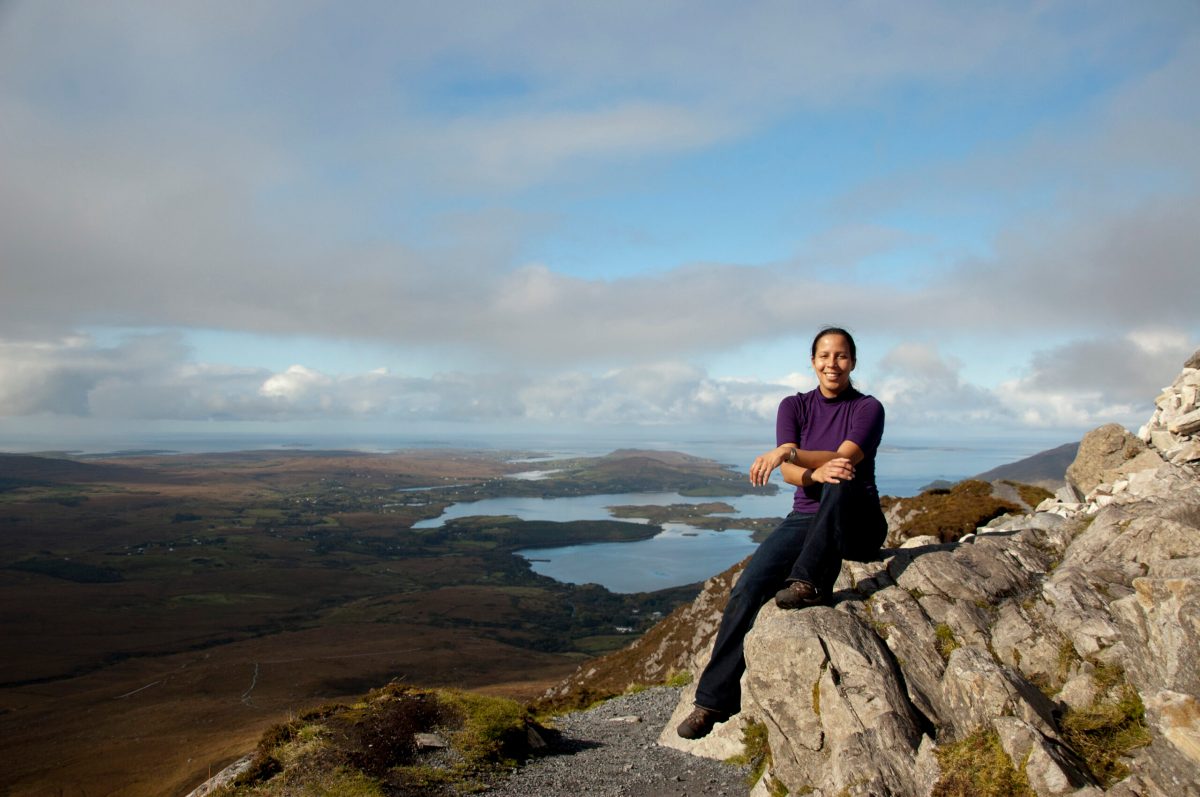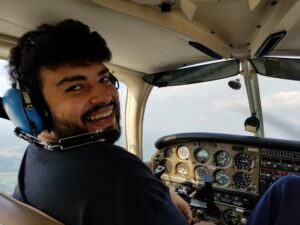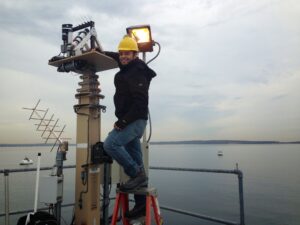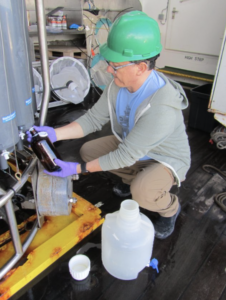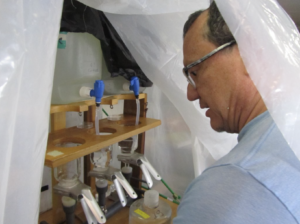Inia M. Soto Ramos is an associate researcher and one of PACE’s data validation leads at NASA’s Goddard Space Flight Center in Greenbelt, Maryland.

What is your favorite atmospheric or ocean related book or movie?
I will go with “The Silent World” (1953) by Jacques Cousteau and Frédéric Dumas. It’s a book but was later made into a documentary. I’m a diver, so it’s really cool to see the advancements of diving over time. Back in that day, divers were attached to a cord back to the surface that provided air. Then came along the Aqua-Lung technology so they no longer needed the cord and swam free to explore. It opened our eyes to the wonders of the ocean, and it started sparking more research and more curiosity. It was risky and exciting.
What is your background?
I’ve used ocean color imagery since 2005, when I started doing my PhD. It helped me study coral reefs and the connectivity among different coral reef communities, and how river plumes can go from one reef area to another reef area. Then, I moved into studying phytoplankton from space and creating algorithms to detect harmful algal blooms.
What do you do for PACE?
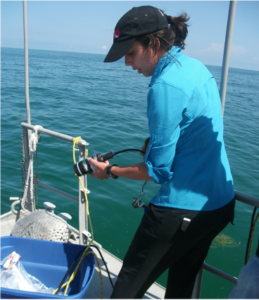
PACE data is compared with similar measurements collected in the ocean and atmosphere to make sure they agree; and that process is called satellite validation. In addition to being a part of the science team, I help the validation team by making sure we have enough field data to validate PACE data. This process allows us to know how good the data is and whether there any issues that need to be resolved. Once we know the data is good, we can use it to create algorithm to derive satellite products that are meaningful to the public and scientific community, such as water and air quality products. I am part of the SeaWiFS Bio-optical Archive and Storage System (SeaBASS) Team that archives data from scientists all around the world, which are then used to either validate the ocean color sensor data or to create algorithms. That will be the main database for PACE, so I make sure the data that is gathered goes into the system and is used for PACE validation.
What was your favorite part of watching launch?
I was at launch with my little one, so it was very exciting to be with him and to show him where the actual launch was from. The funniest thing he said to me was “no, PACE is not in space”, and I asked why, and he said it was too big to fit on the capsule! I had to explain to him that the capsule was bigger but that we were so far from it, that it looked much smaller than what it is! It was also great to see some of my long-time friends and colleagues and share this one-in a lifetime experience with them.
What are you most looking forward to once data starts coming in?

The first thing will be seeing how the PACE data matches up with the field data. Then, I’m excited to start getting some information about different types of phytoplankton and comparing that data to more advanced types of classifications of phytoplankton.
What is your favorite color and why?
I don’t have a favorite color. I have quite a bit of a flamboyant personality. I usually wear a lot of colors and I like to mix them, it’s hard for me to decide on the one color itself. You’ll see me with something red, something blue, something pink – I like them all!
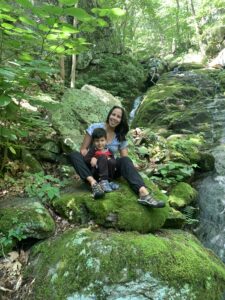
What’s a fun fact about yourself?
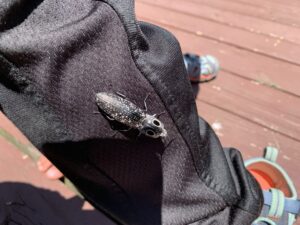
I like exploring and being active. Before I had my child I used to go diving, I did acro-yoga. After my son, I’ve slowed down a little bit, but we like to go hiking a lot and every year we try to go camping in a different place. We like gardening together and looking for bugs, which was not something I thought was going to be part of motherhood. We love going out and searching for bugs and creatures. Once he gets bigger, maybe we’ll go back to the more adventurous activities like diving.
What advice would you give to aspiring scientists or engineers or technicians who are looking to get where you are today?
I think persistence is the key! Even when we know what we want, life can’t be taken as a straight path and in a hurry. One of the mistakes that we do sometimes is that we think we need to go to college, we need to finish in four years, we need to keep going to the next step and finish as fast as we can. But little detours along my path helped me really find what I wanted to do, and also gave me the skills to find a job. So, I think those little detours, those opportunities, are the key to success. I strongly encourage internships and REU programs, study abroad programs, go and present at scientific meetings, participate in field campaigns, and go out of the traditional classroom!
Also, always have something to enjoy a little bit outside of work. Have a hobby to go do things that make you happy. You need something else also to keep you going, and when you’re happy you’re successful.
What is a catch all statement that you would want the public to know about the importance of PACE?
PACE is going to make an impact on communities. The science that is going to come out of PACE is really going to impact our quality of life and our enjoyment of our resources like the oceans and the air.
PACE will open our eyes about the wonders of the ocean, new things that we haven’t explored, new things that we don’t understand. I really encourage teachers and parents to use some of the resources from PACE, because young people are the ones that need to be fascinated by the ocean – those are the future generations that are going to take care of our resources.
Header image caption: Soto Ramos hiking in the Connemara National Park, Ireland. Courtesy of Inia Soto Ramos
By Erica McNamee, Science Writer at NASA’s Goddard Space Flight Center

